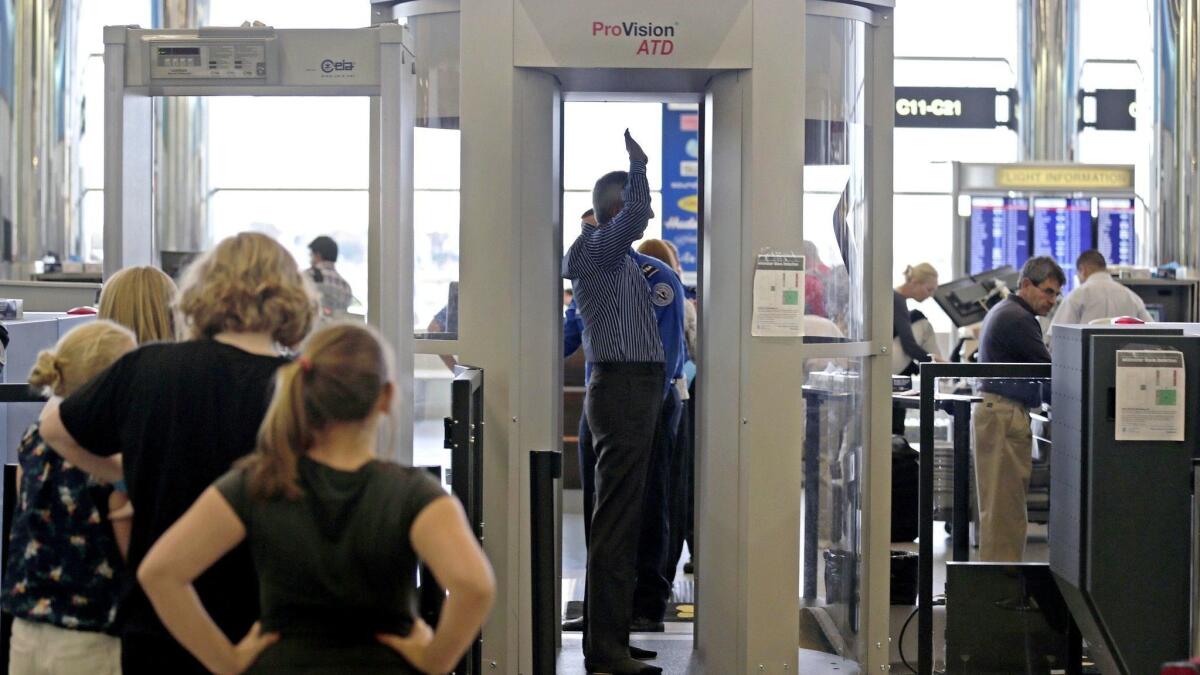In latest defense merger, L3 and Harris agree to form a $33.5-billion military technology giant

- Share via
L3 Communications Inc. and Harris Corp. have agreed to merge in an all-stock deal, the two companies announced this week, creating a $33.5-billion military technology company.
The combined company would be called L3 Harris Technologies and based in Melbourne, Fla., the home of Harris. The deal is expected to close next year, pending a review by the Defense Department.
“L3 Harris Technologies will possess a wealth of technologies and a talented and engaged workforce,” L3 Chief Executive Chris Kubasik said in a news release. “By unleashing this potential, we will strengthen our core franchises, expand into new and adjacent markets and enhance our global presence.”
Both companies have built military communications empires focused on networking and surveillance capabilities that are built into larger defense systems.
Harris handles complex military communications networks for battlefield management and in military aircraft. It is also known for a brand of Stingray cellphone trackers used by U.S. law enforcement. And it has made inroads in the space industry thanks to a recent classified contract win, executives said in a recent call with investors.
New York-based L3 Communications’ most visible products are the 360-degree scanners that travelers encounter when they go through airport security, part of a $170-million line of business with the Department of Homeland Security. It also makes night-vision equipment and sensor systems used in military aircraft. Under the stewardship of Kubasik, a former Lockheed Martin chief operating officer who took the helm at L3 last year, the company has established new business units around next-generation military technologies such as undersea drones.
Under a succession plan agreed to as part of the deal, Harris CEO William Brown would serve as chief executive of the combined company for two years after the close of the merger. Then, Kubasik is to become chief executive in the third year, according to an announcement from both companies.
In Sunday’s announcement, Kubasik said the transaction is intended to create a sixth prime government contractor. The five largest defense contractors — Lockheed Martin, Boeing, Raytheon, Northrop Grumman and General Dynamics — have dominated the U.S. defense market for years, each of them taking in more than $10 billion a year from the federal government.
L3 Technologies and Harris took in a combined $8.3 billion from the federal government last year, making the combined company the seventh-largest recipient of 2017 U.S. contract dollars behind the five major defense contractors and McKesson Corp., a drug company.
At $16 billion in projected 2018 revenue and about 48,000 employees, the new L3 Harris Technologies would be able to boast that it is the sixth-largest U.S. defense company. It would be bigger than shipbuilder Huntington Ingalls and BAE Systems.
The combination is the latest in a flurry of mergers and acquisitions among government contractors, which are taking advantage of a frothy stock market and favorable defense spending to pursue new opportunities.
Last year, Northrop Grumman bought Orbital ATK, a contractor focused on the space industry, for $7.8 billion in cash. United Technologies Corp. bought aircraft parts manufacturer Rockwell Collins for $30 billion.
Deal making accelerated at the beginning of 2018 after a 2019 defense budget facilitated a healthy jump in spending and Congress lifted the “sequestration” caps that have hobbled the industry since 2013. In February, a small government contractor called ECS Federal was bought for $775 million by On Assignment, a Calabasas recruiting firm, in a rare instance of a commercially oriented technology company entering the government market. In spring, General Dynamics bought a midsize information technology contractor called CSRA for $7.2 billion.
The merger of L3 and Harris also represents a further step in hollowing out the middle of the U.S. defense market, as large and middle-tier government contractors are finding they can climb the ladder more quickly by joining forces.
The Defense Department could block the merger of L3 and Harris depending on the results of its review, though it has taken a hands-off approach to recent mergers.
More to Read
Inside the business of entertainment
The Wide Shot brings you news, analysis and insights on everything from streaming wars to production — and what it all means for the future.
You may occasionally receive promotional content from the Los Angeles Times.









